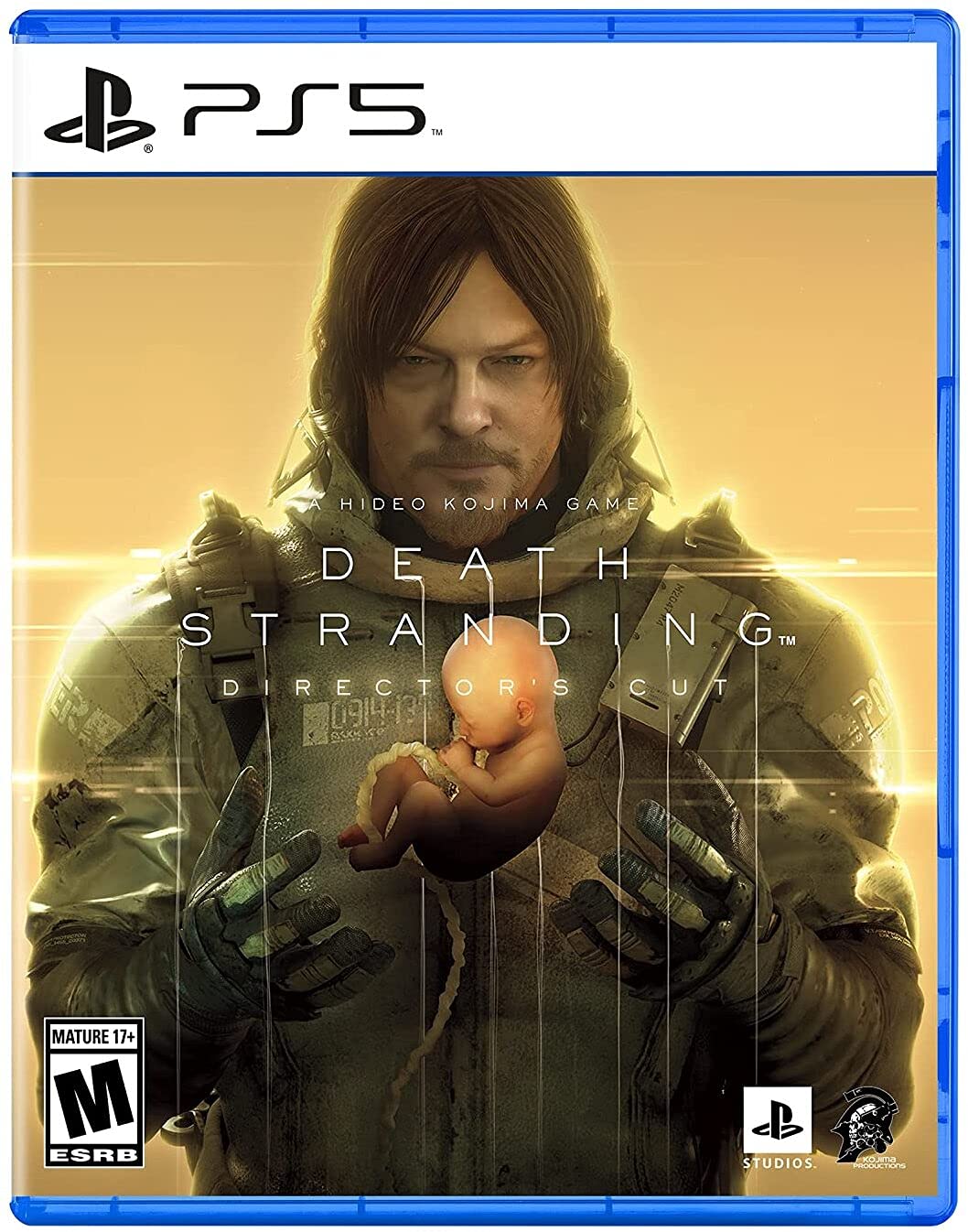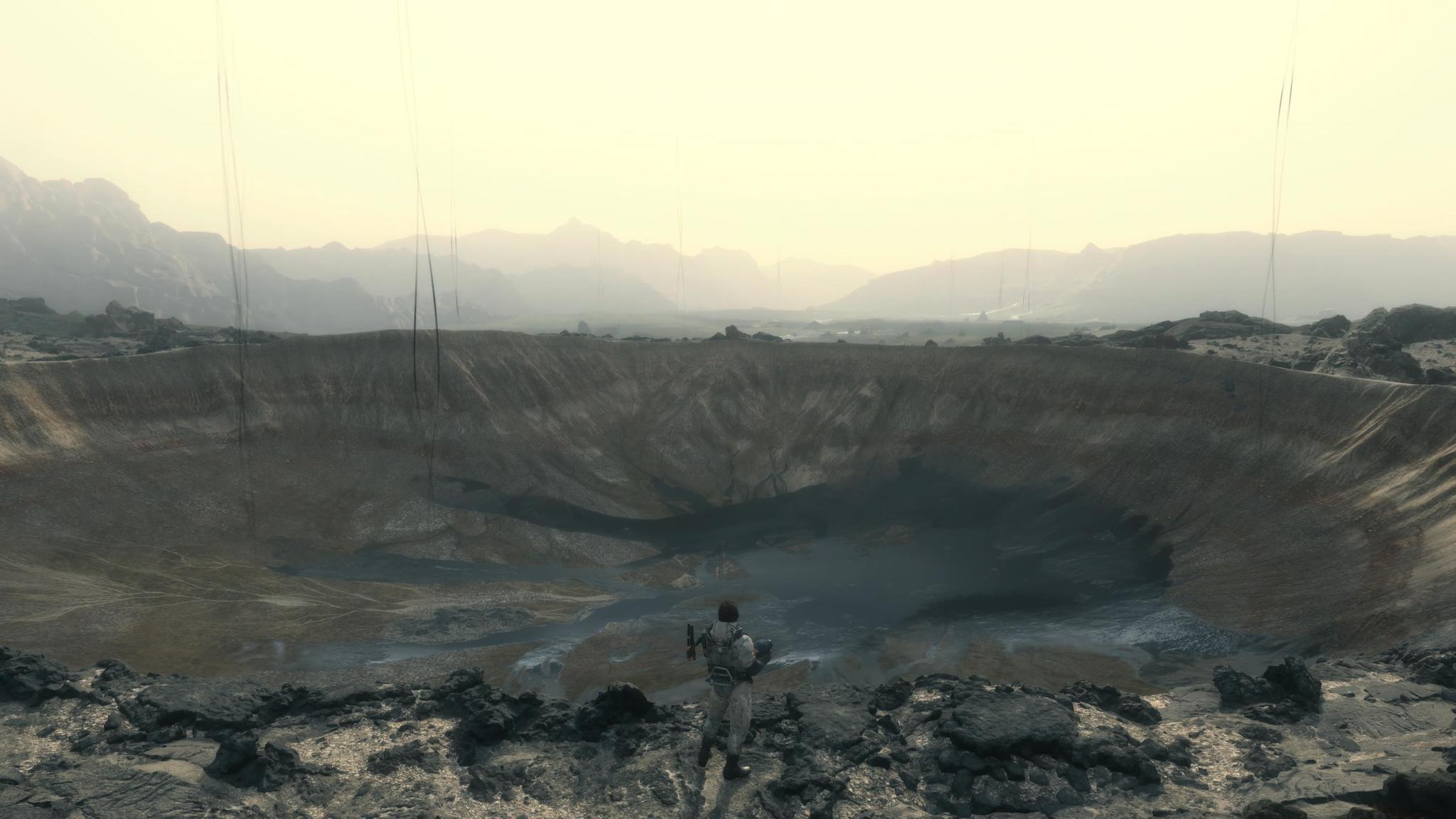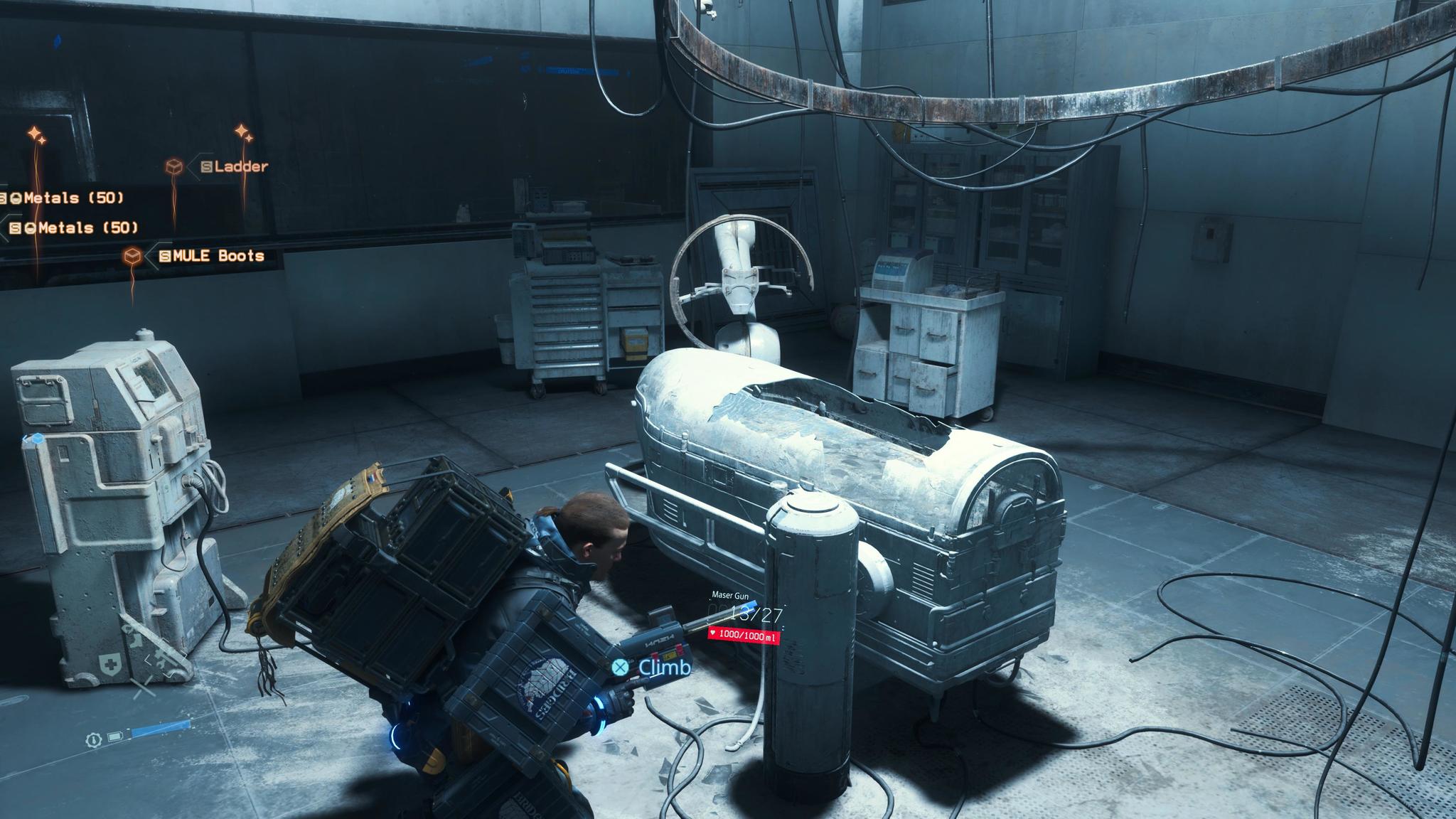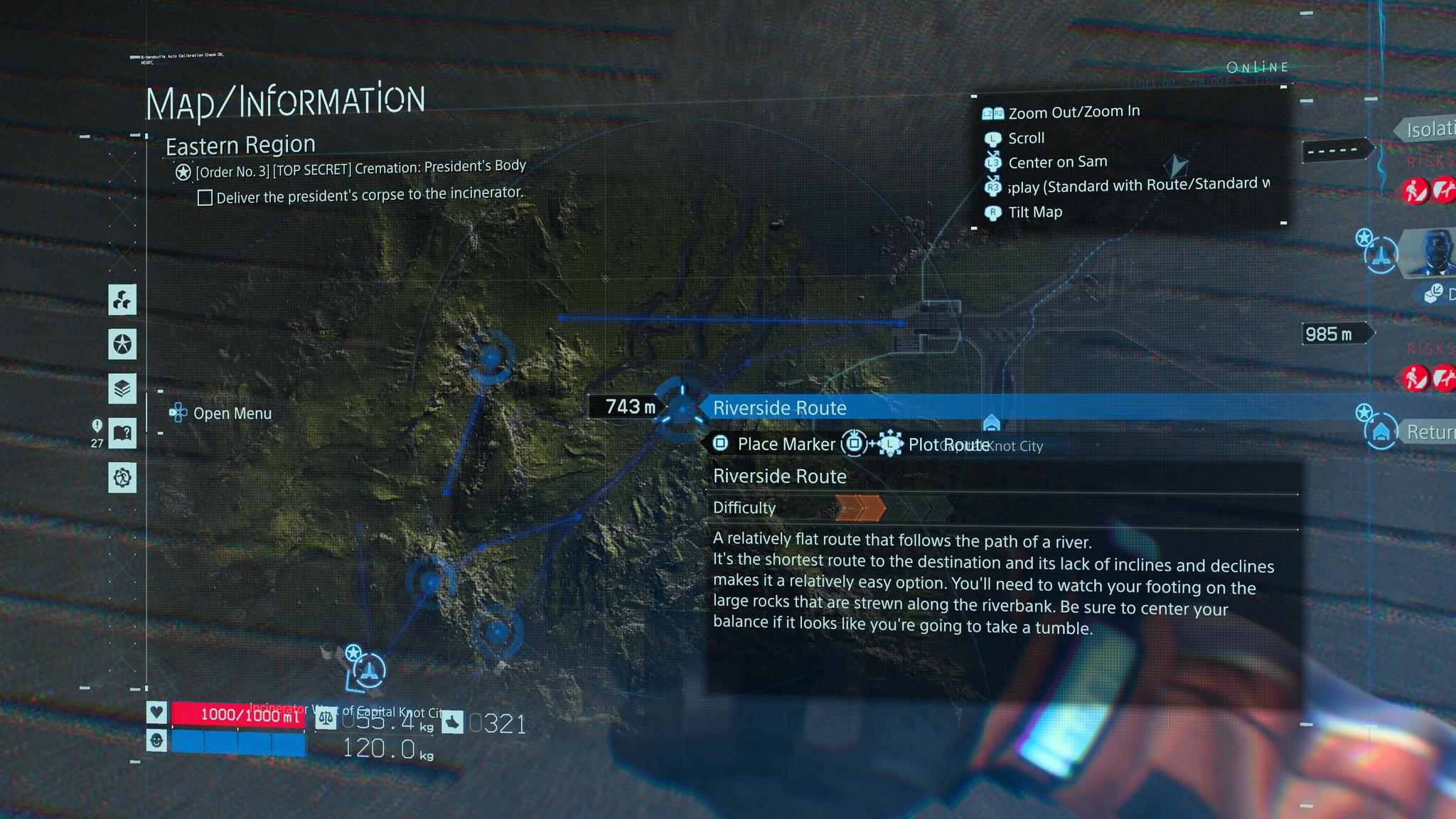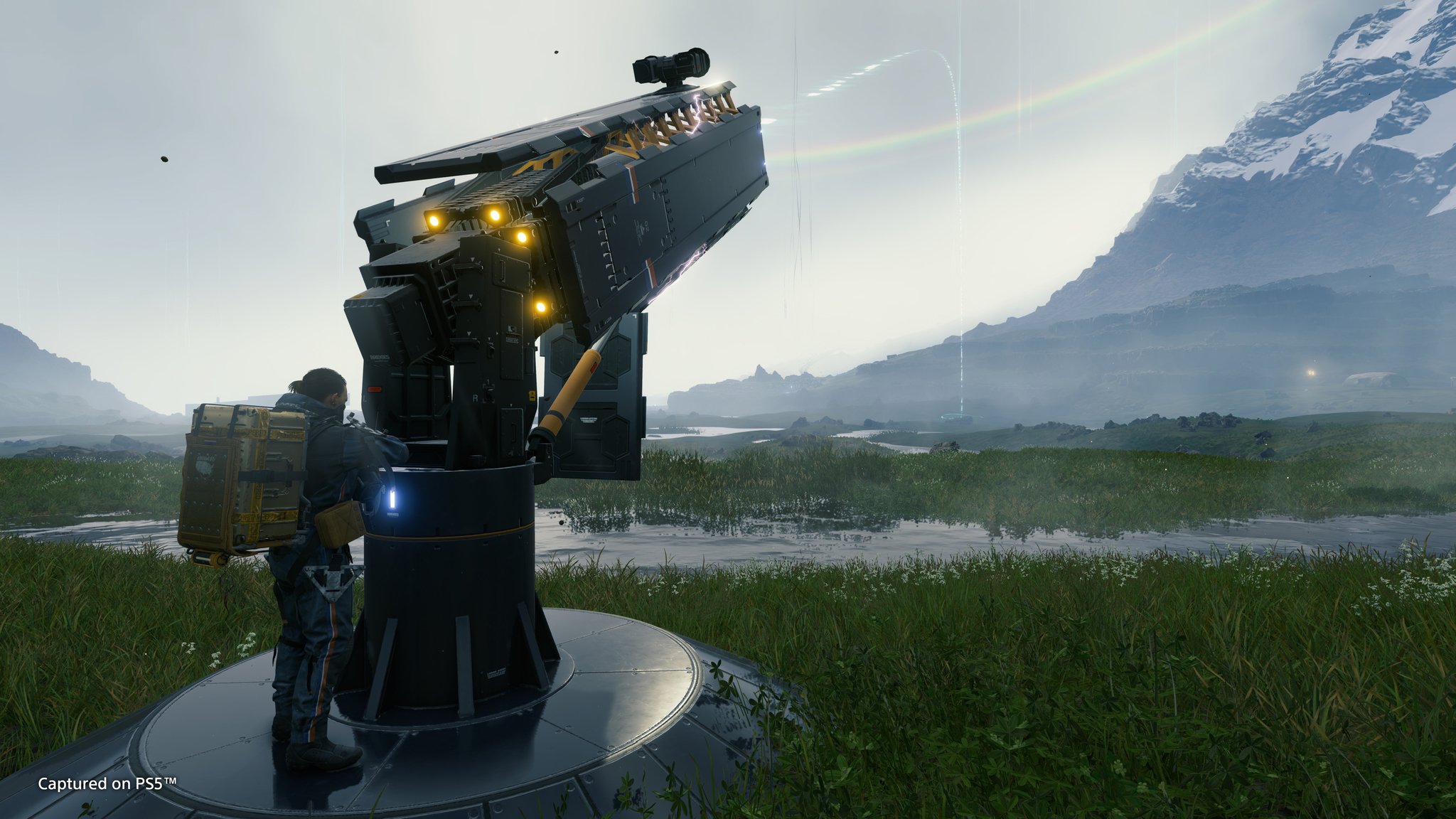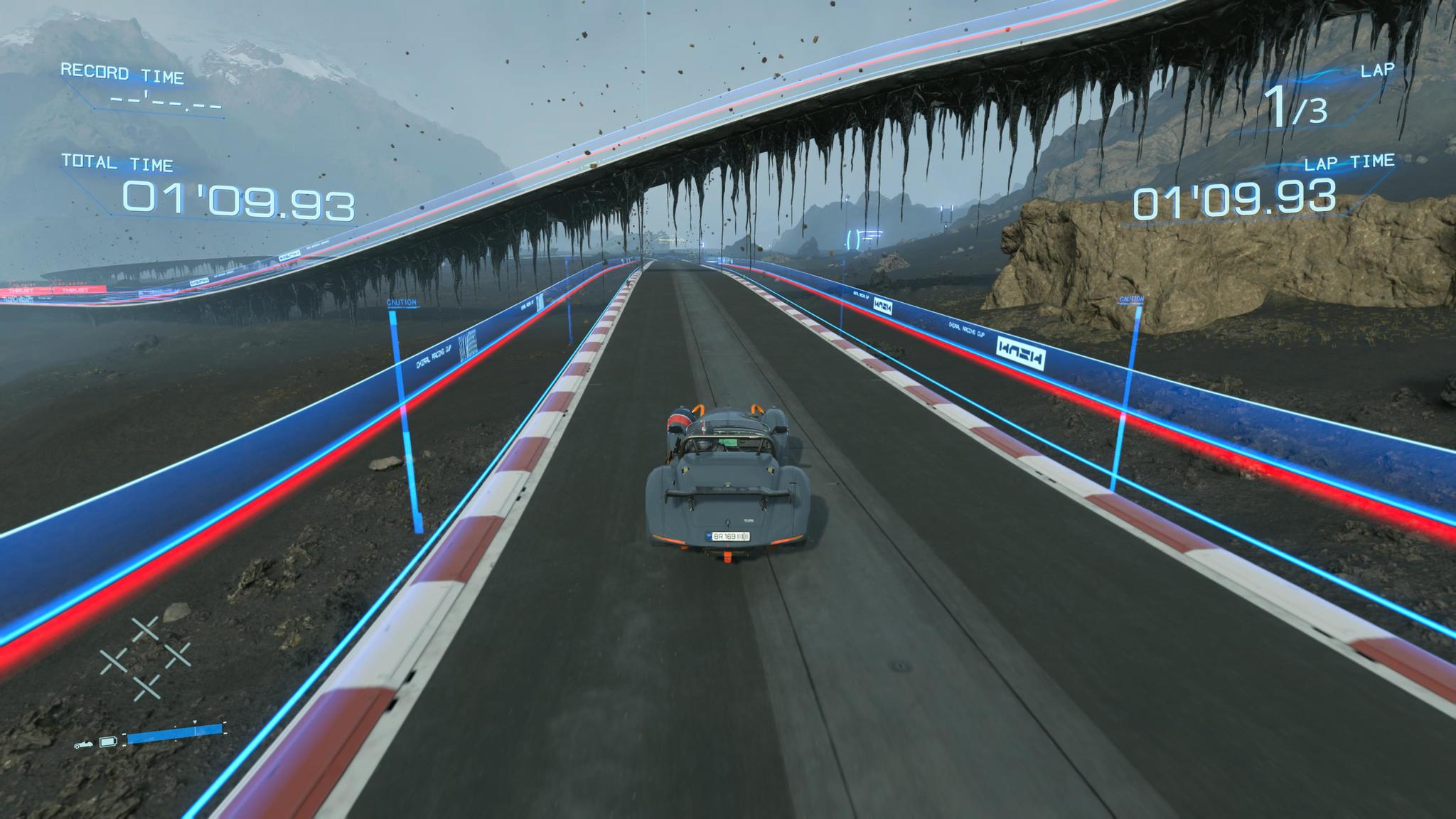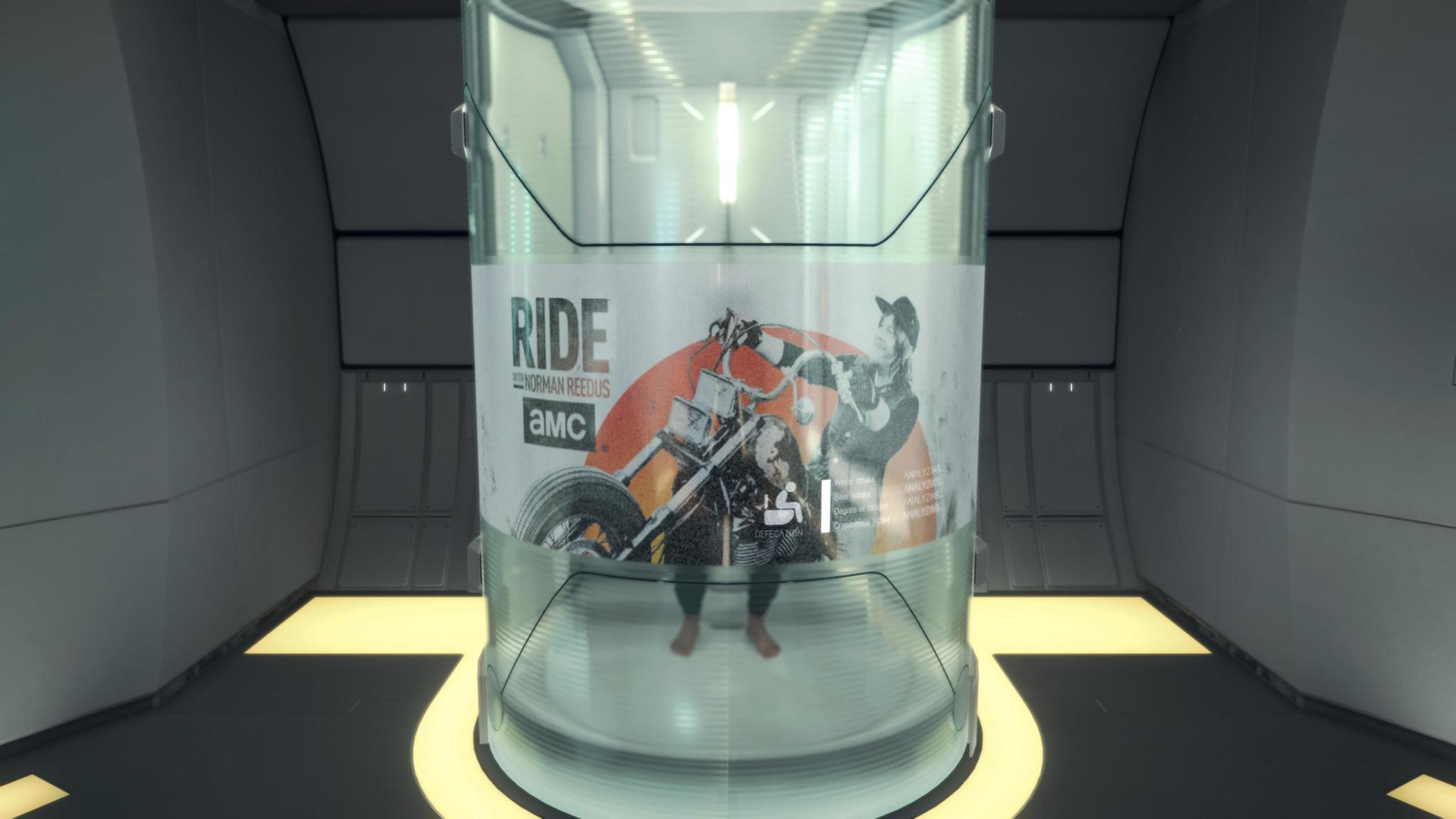Sure, why not a racetrack.
Death Stranding is one of the most bizarre games on the PlayStation platform, and it's bound to still be even with the Director's Cut, a version of the game for the PS5 that includes next-gen upgrades and new features. Marketing materials explained that a lot of those new features were implemented to make the game more accessible to newcomers. While that is definitely true, Kojima Productions also worked to make the game hip and cool for the kids because what Death Stranding needed was more light-hearted fun and cool motorcycle tricks.
Death Stranding Director's Cut is filled with frivolous additions that, at first, seem to create strange tonal shifts. As a delivery man working to unite America after a world-changing and delightfully convoluted apocalypse, you might find it strange that you can now shoot packages out of a cannon or ride a chirping robot across the desolate landscape. However, Death Stranding has always been a game about intense apocalyptic topics combined with silly game-centric interactions, and the new elements only drive that point home more. If you want to have more fun as you walk across America, the Director's Cut is definitely worth a look. It helps also that the game looks more gorgeous than ever on the PS5.
Death Stranding Director's Cut
Bottom line: Death Stranding Director's Cut is for fans of the series who want to replay this title in all its glory on a PS5, but it's mainly for newcomers thanks to tweaks to the early game that make it more accessible.
The Good
- Some additions make early game easier for new players
- Expansion content flows seamlessly with the base game
- Looks and plays incredibly on PS5
- Buddy Bot 🤖
The Bad
- Combat is still clunky
- Some additions are more fun distractions than meaningful changes
$50 at Amazon $50 at Best Buy $60 at PlayStation Store
Death Stranding Director's Cut: What I liked
Death Stranding is a dense game, and that's always been a part of its charm for many players. From the first trailers, people didn't know what to make of this game, nor could they figure out what it was really about. Booting up the game for the first time isn't as confusing an experience, but it's still a confounding one. There's a lot to take in not just story-wise, but concerning gameplay. Even just the act of walking in Death Stranding is complicated, like having to balance Sam Porter Bridges on his left and right sides when he's carrying too much cargo.
| Category | GameNameXXX |
|---|---|
| Title | Death Stranding Director's Cut |
| Developer | Kojima Productions |
| Publisher | Sony Interactive Entertainment |
| Genre | Action adventure / walking simulator |
| PlayStation Version | PlayStation 5 |
| Game Size | 68.6GB |
| Play Time | 40+ hours |
| Players | Single-player with online elements |
| PlayStation Now | No |
| Launch Price | $50 or $10 with PS5 upgrade |
The aim for the Director's Cut, in a lot of ways, was to make the early game more accessible to newcomers. There isn't a ton here, but a couple of small changes make a big difference. The first is the Maser Gun, which can stun humans through shock damage. This is important for taking on MULEs (the human enemies throughout the game that can knock you out and steal your cargo) early on before you get necessary weapons like the Bola Gun. In the original cut of the game, you had to either use your strand to sneak up on enemies to take them out or do your best to sneak around them. The first time you go out to encounter MULEs, you'll receive the Maser Gun, which runs on your battery instead of ammo and can take out enemies with a couple of shots. Shooting is still hit or miss in the game, but it makes those early levels much easier.
The second piece of equipment introduced earlier in the Director's Cut is the Support Skeleton. Sam relies on Exo-skeletons throughout the game to lighten his cargo load or make him run faster, but you only gain access to them starting in Chapter 3, which is quite a few hours in. The Support Skeleton is a relatively simple version of the ones you unlock later, but it increases your movement speed. It's not as fast as using the Speed Skeleton, but it's enough to help you with some earlier timed requests and helps you understand the system.
Finally, there's the firing range. A lot of games have something similar as a way to let players test various weapons in tutorial-level combat. One of Death Stranding's weaknesses has always been its combat, which isn't bad but certainly isn't the focus of most scenarios you encounter in the game. On console, it takes longer than it should to get Sam in the correct position to fire on an enemy, and the ammo system, which often involves strange variants like blood, contains too many variables to keep track of when staying alive is on the line. The firing range doesn't help with a lot of this, but it is a way to help you out with new weapons. I didn't find much value in it beyond a couple of digressions, but the game does give you plenty of missions in the firing range for you to complete, and some likes if you want them. It's more helpful for new players who might not be as familiar with the specifics.
Besides these three big changes, there are a lot of small tweaks I noticed during my time with the Director's Cut, which constituted my third Death Stranding playthrough. However, a lot of them were integrated so seamlessly it was tough to really tell if they were new at all. Death Stranding has done a great job over its life cycle with updates that just seem to fit in with the flow of the game, even some of the more ridiculous ones like the Cyberpunk or the Valve quests, and some of the new requests and additions are no exception.
For example, I noticed going out on my first trek that the map now included three path options for me to get to the incinerator. It laid out the direct path and let me know that there would be more BTs, but also laid out a longer but more peaceful path. This doesn't show up at any other point in the game, but it's a great way to get players to understand how taking multiple paths can benefit their journey.
There were already plenty of items and tools for Sam to build and experiment with, but now there are a few more. The new Jump Ramps and Chiral Bridges give you new ways to traverse rivers and crevices in the landscape, while the Cargo Catapult and Buddy Bot, a personal favorite, provide you with a new way to carry cargo (you can also rest on top of a Buddy Bot and it can carry you as well). It was difficult to pull off a successful leap with the Jump Ramp so I didn't use them too often, but if you have a motorcycle on hand, you can land some neat tricks if you time and position it just right.
Other additions don't necessarily add anything substantial or essential to the game, but work to either expand the world or are just fun to play around with (I'll get into the second point in the next section). In terms of world expansion, a big thing is the new Ruined Factory setting, which is at first overrun by MULEs but then slowly gets open for you to explore over multiple missions. As you unlock new areas in it, you get new bits of story about old experiments and the characters involved. It also just provides a new type of area to explore, and its design — buried under the Earth in an old parking garage with moss-covered vehicles — is refreshing. You see a lot of decay throughout Death Stranding, and most artifacts are covered over, so it's interesting to actually see something from the old world so clearly.
And you'll be able to see a lot more clearly thanks to some PS5-specific upgrades. The visuals were always outstanding in Death Stranding, but somehow moving to the PS5 and taking advantage of that tech made it so much better. River water has never looked this good, and the details in the distance seem clearer than ever thanks to 4K and HDR support. Like with the DualShock 4, the game takes full advantage of the DualSense's features, including adaptive triggers and haptic feedback you can feel even as you're walking.
Death Stranding Director's Cut: What I didn't like
There's nothing to exactly dislike when it comes to the Director's Cut but there are a few areas that could have been improved. The main one is combat, which as I previously mentioned is still clunky. It's never been the focus of the game, and it shows even in the enhanced version.
The second thing is that some of the changes are more fun and frivolous than necessary. This isn't out of line with the game's tone, which has always been purposefully all over the place, but a lot of the highly marketed changes fall into the fun category. They don't add much to the game, but they work as fine diversions. One of the biggest is the racetrack, which you can build near the Timefall Farm hours into the game. Unlocking it requires the same amount of resources as unlocking a Paver to rebuild a road, so it requires some travel and collecting, but if you want a couple of fun laps around a closed-in racetrack with a new vehicle, it's a decent way to pass the time.
Overall, there are a lot of new additions to Death Stranding with the Director's Cut. They fall into two categories: tools for newcomers and fun diversions. While the changes that fall into the former category are relatively small, they do make some of the tougher elements of the game just slightly more manageable, which is a lot in a game as complex as this. The changes in the latter category, however, just act as optional distractions in an already very long and convoluted game.
Death Stranding Director's Cut: Should you play?
The fun of Death Stranding has always been in its dense storytelling, its array of varied game mechanics, and the bits of humor that seem out of place in this dark and dreary world. You play the game because of how great it feels to walk across gorgeous landscapes rebuilding roads and connecting with other players through a passive but effective social network. You also play because the performances are excellent and sometimes Norman Reedus has to go to the toilet and make some grenades behind an advertisement for his show Ride with Norman Reedus on AMC. It's a lot of game, but it's enjoyable on its own terms.
Death Stranding Director's Cut continues a lot of that but wants to appeal to players who didn't jump in the first go around, first and foremost. A lot of the best changes subtly make the early game segments more approachable and easy to navigate. However, there are a lot of changes that add to the game's fun factor, which mostly work as distractions.
Nothing is out of place though. The changes flow well into the base game and even though they're frivolous, additions like the racetrack are very on-brand for Kojima's vision. Death Stranding is a game that tells its own story but is aware of the fact that it's a game, and even the silliest elements fit into that.
If you've already played Death Stranding, I'm not sure if Director's Cut is worth playing on its own, but if you want to replay it, the PS5 upgrade is only $10 and it looks amazing on the new console. If you're new to the game, it might be time to jump in and play this kooky title for the first time. You never know what kind of fun you'll have with what is truly one of the best PS5 games right now.
Death Stranding Director's Cut
Bottom line: Death Stranding Director's Cut is a great way for new players to get into this convoluted but highly entertaining game. For returning players, it's just neat to see it play out with all the PS5's tech leading the way.
Source: androidcentral

